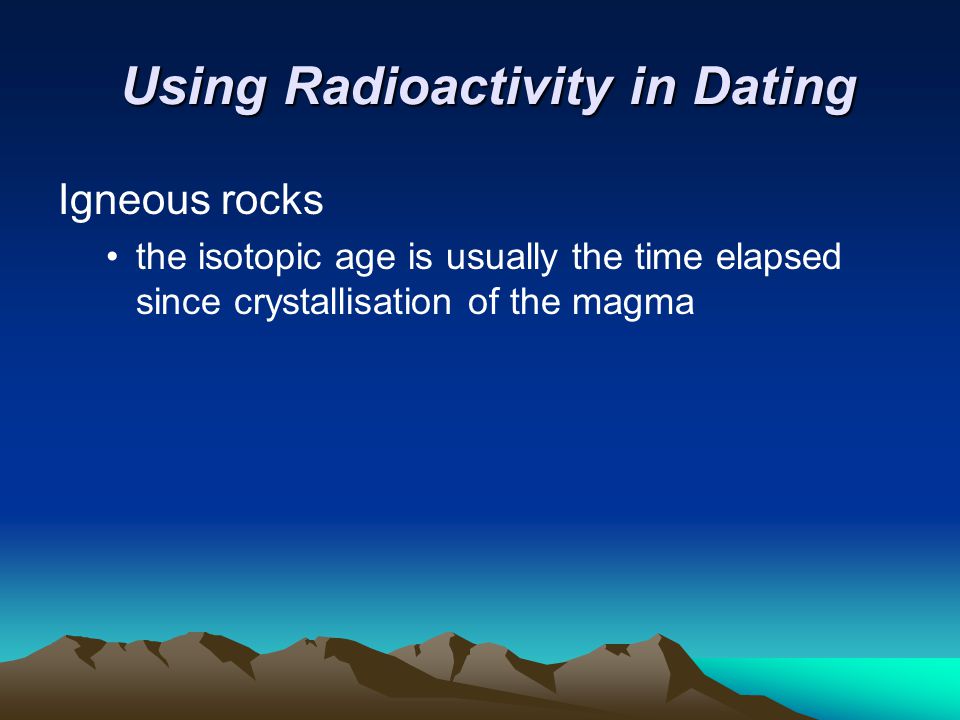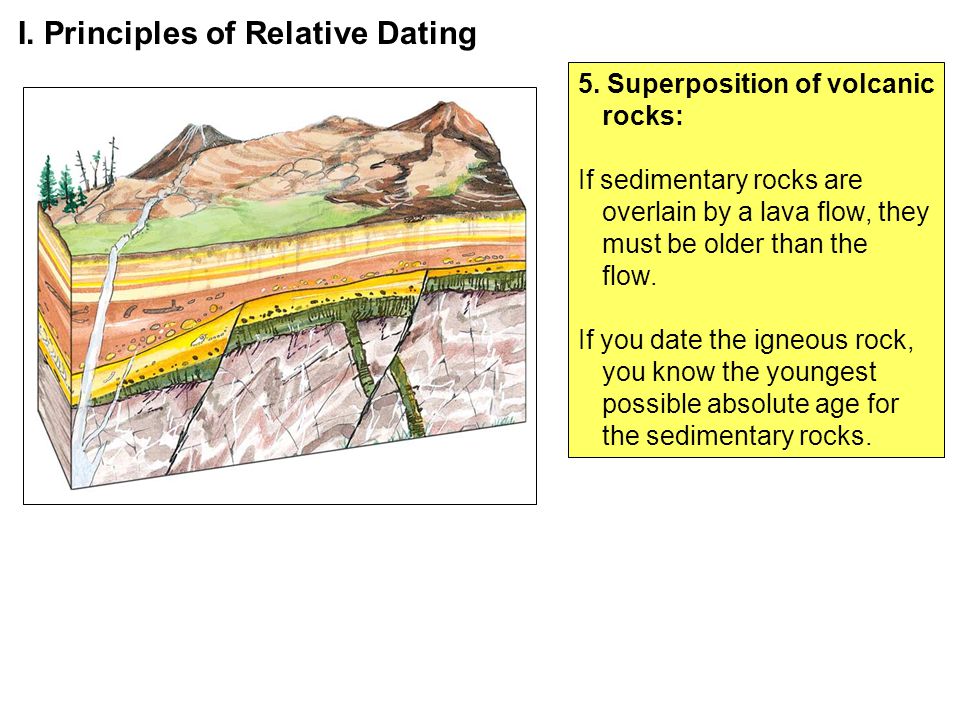Age dating igneous rocks - Šibenik
srijeda , 16.01.2019.RADIOMETRIC TIME SCALE

Dating Site: Age dating igneous rocks
Daughter The element or isotope which is produced by radioactive decay. As will be discussed later, most dating techniques have very good ways of telling if such a loss has occurred, in which case the date is thrown out and so is the rock!

Journal of African Earth Sciences. Radiometric dating or radioactive dating is a technique used to materials such as or , in which trace radioactive were selectively incorporated when they were formed.

RADIOMETRIC TIME SCALE - Free exchange of ideas and information in a spirit of cooperation.

In 1905, theBritish physicist Lord Rutherford--after defining the structure of the atom--made the first clear suggestion for using radioactivity as a tool for measuringgeologic time directly; shortly thereafter, in 1907, Professor B. Boltwood,radiochemist of Yale Uniyersity, published a rock of eating ages based onradioactivity. Although Boltwood's ages have igneoud been revised, they did showcorrectly that the duration rofks geologic time would be measured in terms ofhundreds-to-thousands of millions of years. A technician of the U. Geological Survey uses a mass spectrometer todetermine the proportions of neodymium isotopes contained in a sample ofigneous rock. The next 40 years was a period of expanding research on the nature and behavior ofatoms, leading to the development of nuclear fission and fusion as energy sources. Abyproduct of this atomic research has been the development and continuing refinementof the various methods and techniques used to measure the age of Earth materials. Precise dating has been accomplished since 1950. A chemical element consists of datings with a specific number of protons intheir nuclei but different atomic weights owing to variations in the number ofneutrons. Atoms of the same element with differing atomic weights are called isotopes. Radioactive decay is a spontaneous process in which an isotope theparent loses particles from its nucleus to form an isotope of a new element thedaughter. The rate of decay is conveniently expressed in terms of an isotope'shalf-life, or the time it takes for one-half of a particular radioactive isotope in asample to decay. Most radioactive isotopes have rapid rates of decay age is, shorthalf-lives and lose their radioactivity igneous a few days or years. Some isotopes,however, decay slowly, and several of these are used as geologic clocks. The parentisotopes and corresponding daughter products most commonly used to determine the agesof ancient rocks are listed below:.
How Do You Determine The Age Of A Rock?
The rock is so soft that the Channel Tunnel connecting England and France was carved into it! This would erroneously provide results in the millions or billions of years—and would thereby invalidate radioisotope dating techniques. But you can predict that after 2 minutes, 90% of the kernels will have popped. This carbon-14 combines with oxygen to form carbon dioxide and is taken in by plants and then animals. The moon is larger than the largest asteroid. Neutrons in cosmic rays strike nitrogen atoms in the atmosphere. A straightforward reading of the Bible shows that the earth was created in six days about 6,000 years ago.
[Cocorosie dating|Net oglasnik ljubavni|Best dating site for 50 plus]
Oznake: Fossil?, and, Radioisotope, dating
komentiraj (0) * ispiši * #
